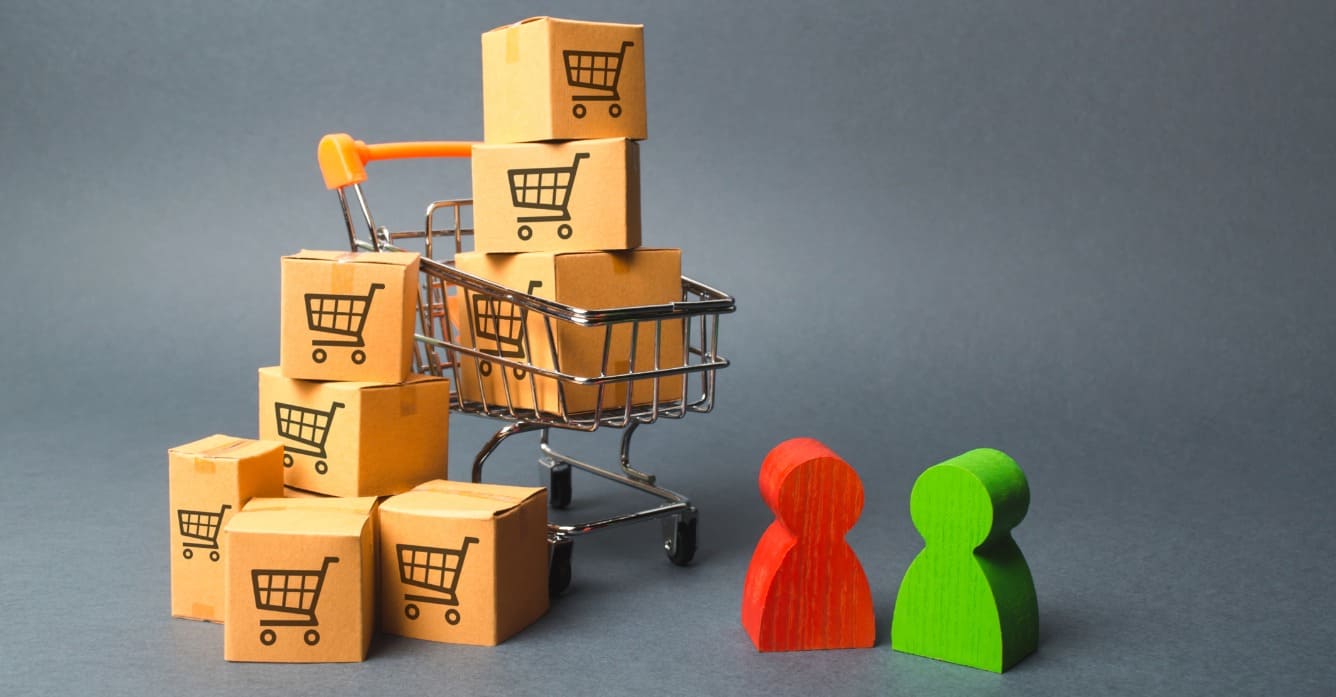While there are many metrics a retailer can focus on, sales per item (aka average price per item, average unit price, etc.) and sales per customer (aka average basket size, average transaction size, average order size, etc.) are two key metrics that should be visible on your systems dashboard and included in your systems reporting. However, these are sometimes overlooked. In this two-part series, we’ll look first at why these two metrics are important and what can impact them. In the second part, we’ll look at how you can drive improvement of these metrics through suggestive selling, upselling and effective merchandising.
What is meant by sales per item and sales per customer?
These two metrics are averages. Sales per item is calculated by taking the total sales divided by total items. Total sales and items can be at total store, department or even category level, but typically it’s one of the first two. So, if you had sales of $300,000 and your items sold were 100,000, the sales per item would be $3.00.
Sales per customer is also typically calculated at total store or department level. The core definition of this metric is how many dollars each customer spends, on average, for the items they are purchasing. Again, if sales were $300,000 and your customer count—or transactions—was 10,000, your sales per customer would be $30.00.
Prioritize frequent review of sales per item and sales per customer
Many sales and labor metrics should be reviewed often. Sales per customer and sales per item belong on that list and should be reviewed weekly to identify trends across periods of time and compared to last year. Seasonally, these metrics can change a lot. By reviewing these metrics across stores, district managers or specialists will get a greater understanding of differing work demand when comparing stores that have similar sales but vary greatly on these metrics.
Consider this simple example: Stores A and B sell the same 100 items. Store A has 100 customers, each buying one item. Store B has 10 customers, each buying 10 items. Of course, what customers buy from store to store is never the same, and this fact adds complexity to understanding impacts on the metrics you are reviewing. Store A requires more hours because they are handling 10 times more customers than Store B. Stores A and B have the same total sales and items, but it’s only when you look at customer metrics that you can begin to understand the added work demand on Store A.
A best practice is to have sales per customer and sales per item prominently displayed on your KPI dashboard and reporting that supports these metrics by store, department, across stores and across departments. These metrics are best understood not as a single data point, but in context with other data points. Questions you may ask yourself are, did the ad drive either of these key metrics higher or lower? What is the growth of these KPIs over the most recent weeks? How do they compare to last year?
If you have a labor management team, understanding the differences across stores can help them to better consider labor impacts, too. True labor assessments are better by utilizing a fully engaged labor team or a vendor partner that can be your virtual labor team, utilizing standards to drive true labor demand and scheduling that supports labor at the task level.
What can affect these two metrics?
Many things can impact these two metrics. Customers’ buying ability at the first of the month, middle of the month and end of the month should be taken into consideration. Price fluctuations in commodities like meat and fresh produce along with inflation, deflation, seasonality, sales, coupons and effective merchandising can all drive big changes in both metrics.
Keep in mind, too, that the items your customers are buying may have very different work content. As an example, the meat department may have a sale on pre-pack chicken that only requires it to be weighed, labeled and stocked. The next week they may have a steak sale. If you cut your steak varieties, labor demand will be higher due to increased processes for cutting, packaging, wrapping, weighing, labeling and stocking. Your sales per customer may be the same or similar, but the sales per item would likely show an increase since steaks are a higher retail price point than chicken. But remember, the second promotion has a much greater labor demand because of the additional processes involved in cut meats. A supported standards-based program is essential to rightsize all labor in all departments with varying items and work content from week to week.
In summary
Review sales per customer and sales per item weekly. Review the differences between stores and departments. Make sure these metrics have visibility on your dashboards and in your reporting. Use these metrics in conjunction with other key metrics to understand the varying impacts on what customers buy and how much they buy. Understand the work content associated with these metrics. Stores with similar sales can vary greatly on the number of customers and items they need to process for those sales. It’s also essential that store managers and department managers review and understand these metrics. They should strive to improve current year over last year and to beat forecast.
In part two of this series, we’ll look at how your employees are key to favorably impacting sales per customer and sales per item and ultimately building sales through suggestive selling, upselling and effective merchandising.





